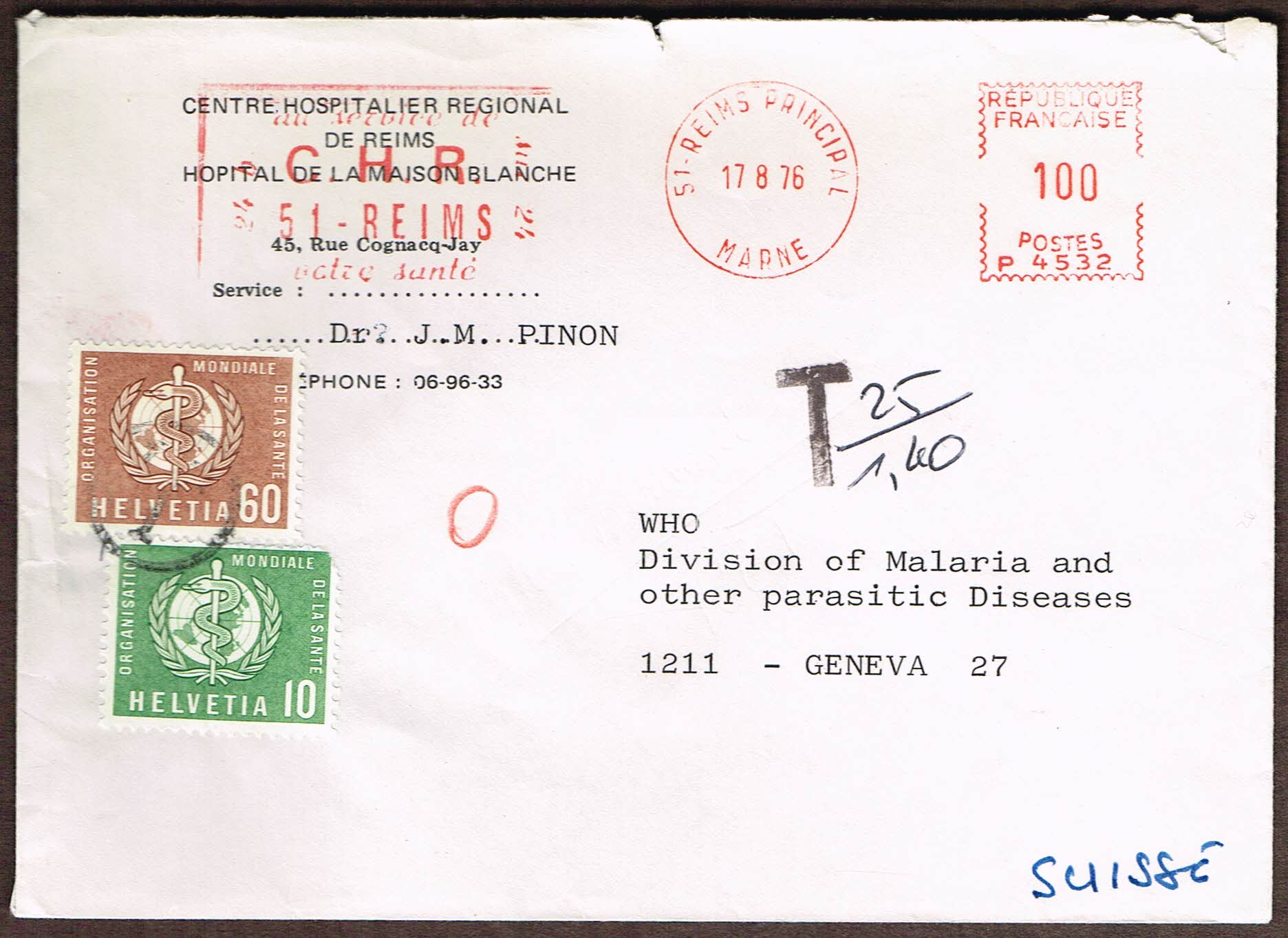"Division Of Malaria" Cover With Postage Dues
(Published: January, 2022, Volume 22, Number 1, Issue #53) (Table Of Contents)(Author: Anthony Dewey)
From Anthony Dewey:
"This is a special cover. I have seen only a handful of covers with UN agency stamps used as postage due.
I bought a batch of them a number of years ago from a dealer. These have been the only examples that I have ever seen."
The amount due is noted by the sending country (France) as a fraction next to the UPU postage due symbol "T". The numerator indicates the deficiency, while the denominator is the normal postage needed in its own currency. The recipient country multiplies the fraction times the rate in its currency, then adds a penalty, rounding up, if needed.
In 1976 the Swiss rate for CEPT countries was 80 centimes and the penalty was 50 centimes. Thus, (25/160)*80 = 12.5; 12.5 + 50 = 62.5. Rounded up, the results should have been 65 centimes due. I have three other examples of letter from France marked at 100 (1 Frank) where the amount due was 65 centimes. I don't know why this letter was charged an extra 5 centimes. Maybe they ran out of 5 centime stamps and rounded up to the next value available?

The amount due is noted by the sending country (France) as a fraction next to the UPU postage due symbol "T". The numerator indicates the deficiency, while the denominator is the normal postage needed in its own currency. The recipient country multiplies the fraction times the rate in its currency, then adds a penalty, rounding up, if needed.
In 1976 the Swiss rate for CEPT countries was 80 centimes and the penalty was 50 centimes. Thus, (25/160)*80 = 12.5; 12.5 + 50 = 62.5. Rounded up, the results should have been 65 centimes due. I have three other examples of letter from France marked at 100 (1 Frank) where the amount due was 65 centimes. I don't know why this letter was charged an extra 5 centimes. Maybe they ran out of 5 centime stamps and rounded up to the next value available?


